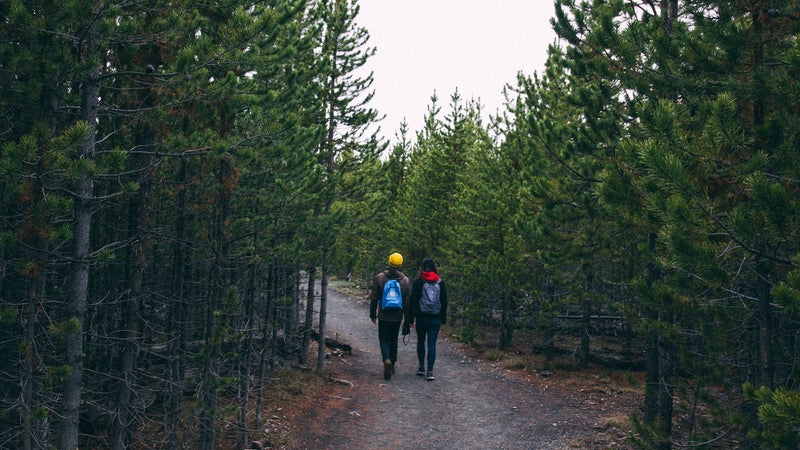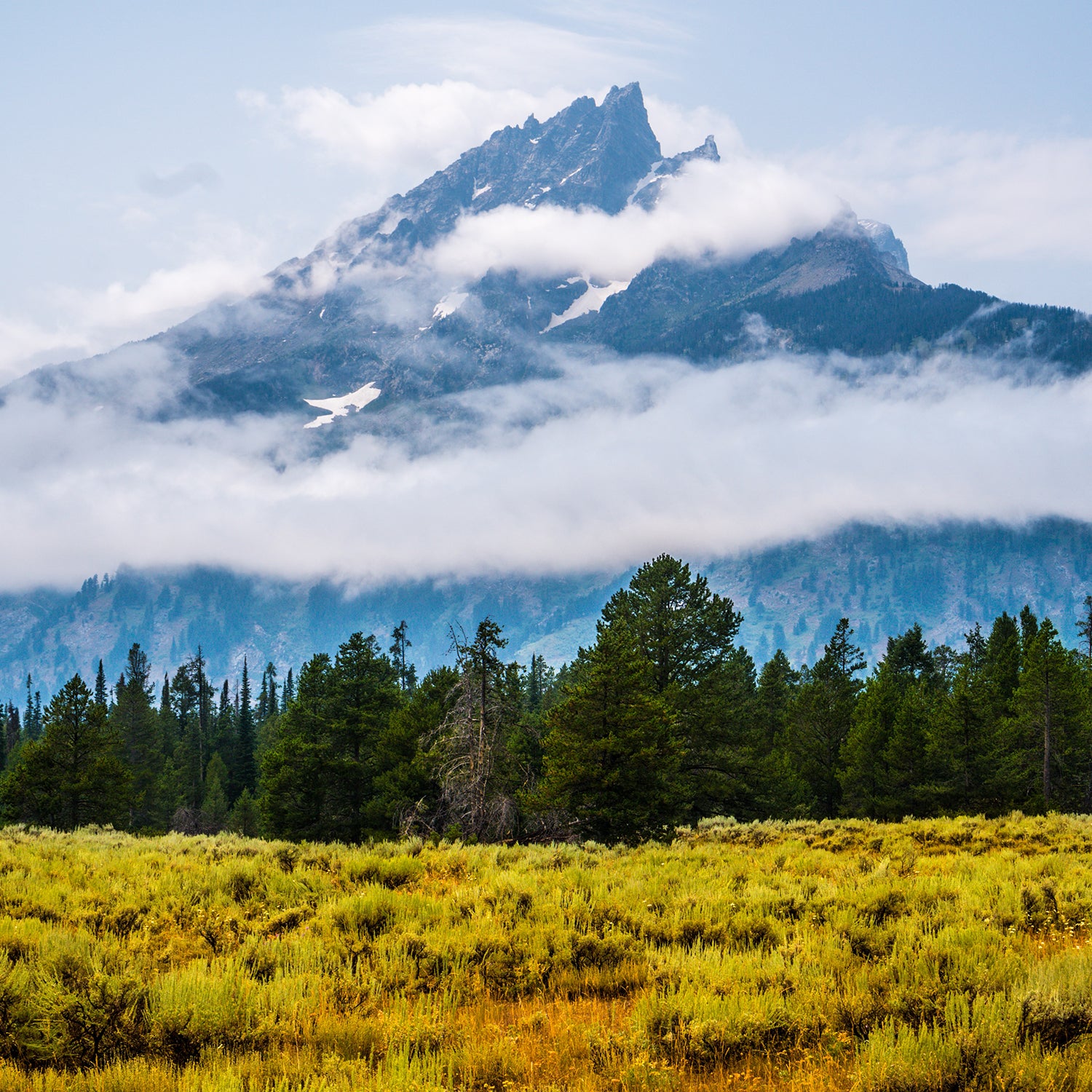Wilderness spaces across the country are—like so much else—in crisis. Last weekend, Cleveland National Forest, outside San Diego, set usage records at two trails. The superlative is bittersweet: on the one hand, it’s encouraging that Americans seem to be reconnecting with their local landscapes. On the other hand, the crowds caused “rampant illegal parking,”��, noting that several visitors had to be airlifted out for unspecified reasons.
Those trails are now closed, as are other park systems�� ���Ի�����California. This week��a spate of national parks, from Yellowstone to Hawaii Volcanoes to Great Smoky Mountains, also closed, following the guidance of national and local officials aiming to halt the spread of COVID-19.��
Yes, nature is pleasurable, and being outside is necessary relief. But by now, amid this pandemic, the ethics of wilderness travel should be clear: don’t go—at least not to the crowded trails and parks. You are putting yourself and others in danger of infection. You are putting pressure on already-strapped medical resources in remote gateway towns.
But don’t think of this as a prison sentence. Instead, it could be the chance for the reset we need. A chance to remember that we are always in the wilderness, which deserves our care everywhere.

The Trouble with Wilderness
What is wilderness? According to��, at least, it’s “an area where the earth and its community of life are untrammeled by man.”
Bill Cronon’s seminal essay “”—which this year marks its 25th anniversary of rankling outdoors lovers—helped upend that definition, at least among historians. When white settlers first arrived on this continent, untrammeled land was a waste,��a missed opportunity to, as the Bible commanded, “subdue” the earth. Not until after the Civil War, as cities grew crowded, did the “community of life” become something worth admiring. Wealthy Americans began to buy up Adirondack camps and pay for guided hunts through the Rocky Mountains. In 1916, the elites’ desire to find pristine��landscapes outside the city led to the creation of a system of carefully protected national parks. Thus, the modern idea of wilderness was born.
This��could be the chance for the reset we need. A chance to remember that we are always in the wilderness, which deserves our care everywhere.
Of course, the North American wilderness was never untrammeled. Native people had already lived here for thousands of years��and had always consciously shaped the flora and fauna. In our wilderness parks, the landscape we regard as pristine and timeless is really just a snapshot of what white people saw when they showed up. And once land became “wilderness,” it could only remain so through vigilance. Human beings, at least the ones not on vacation, had to be kept out. (John Muir, the naturalist whose writings helped spark��the wilderness movement, wanted Natives��out of his beloved Yosemite. More recently,��many outdoorspeople have claimed that immigration might lead to overpopulation��and therefore despoiled lands.) Other species had to be sustained or evicted, depending on their provenance, which is why today the wilderness is actually filled with technology: radio collars tracking bears, microphones recording birdsong, chemicals killing off unwanted plants—all��attempts to “restore” the landscape back to the moment of its original discovery, an arbitrary standard��at best.��
Venturing deep into the woods is, for many, a spiritual, transformative experience—which is partly��why the closure of our beloved parks hits so hard. But science suggests that if you’re seeking the health benefits of nature, you don’t need awe-inspiring or pristine landscapes. Sunshine, natural stimuli like plants and trees, and movement will do. So it’s OK��to call these parks what they are: playgrounds, dressed up to resemble a certain nostalgic ideal. Wilderness, meanwhile, is all around.
Backyard Wilds
Historian Roderick Nash�� of the word “wild” to the idea of will.��So the wild is anything with its own will—anything that grows and changes without human control. That includes the weeds in the street and the masses of bacteria inside us that keep us alive.��
The greenest patch near my house in New Orleans is a man-made pile of earth, a publicly owned levee with a trail on top, squeezed between the Mississippi River and a canal, that serves as a de facto city park. When I walk there I see ibis and herons (and unleashed dogs and men catching catfish). This is what finding wildness looks like in much of America, far from the carefully preserved state and national parks out west: it’s in the tattered edges ���Ի���the culverts where trash accumulates—but where plants grow fierce and feral, too.��
Now, as cabin fever sends my neighbors out on daily walks, that levee feels as crowded as a California trail. So I’m off in search of other islands, places where I can find nature and still maintain my six feet of distance.
What does that entail? For me��it means walking along quieter patches of industrial riverfront��or biking to empty lots where trees are taking root. I’m trying to look with the , for whom a flower is something to marvel at, wherever it grows. You can do this, too, even if you live in an apartment in Manhattan. Go find an overgrown lot and count the different kinds of leaves you see.
So the wild is anything with its own will—anything that grows and changes without human control.
It means getting down on my knees to pick the trash out of my front-yard shrubbery. It means setting plastic pots in the backyard to house the peppers gifted to me by my neighbor. Their presence has made me attentive to the kinds of nature I ignored before: Where is there sunlight, and where is there shade?
My partner went online to look up topographical data, examining how water drains through the yard, so when the time comes to put the plants��in the ground, we’ll know the best spot. (You could also, as the science writer Emma Marris suggested to me, trace the larger contours of your watershed: If you pour a glass of water into the street in front of your home, what path does it follow to the ocean?) This attention has yielded delicious benefits. I’ve lived here for two years yet��never realized that the tangled tree at the back of the lot is a blackberry bush��or that the creeping vine along the fence is a neglected fig tree. Even if you don’t have a yard, you can go find dandelions, the perfect beginnings for a .
I’ve been on how to recognize my backyard birds. Even hearing the birds is a breakthrough, to be honest. My partner and I, in an effort to make our house arrest feel more like a cabin-camping excursion, have kept the doors and windows open as much as possible.
The Value of Nature
None of this is to say that we should stop protecting large tracts of nature. Indeed, the emergence of COVID-19 gives new urgency to their preservation: scientists believe that��habitat loss is a ;��as human beings and wild animals encroach on one another’s spaces, there’s an increased exchange of zoonoses. But there is a difference between sustaining wildlife habitats and romanticizing humanless nature.��
A genre of tweets has begun to circulate amid the pandemic: photos of dolphins swimming in boat-free waters, deer returning to empty parks to eat the flowers. “We are the virus,” these tweets declare. This is wilderness misanthropy at its worst. (Some of the posts, including the dolphins, are also .) Emma Marris is the author of , a book about the new science of conservation that’s emerging as we rethink old notions of the wild. She pointed out to me that these tweets depend on an absurd binary. They declare that humans, despite being animals, are entirely split from nature. If this is the case, it seems we have two options: we can pollute the world, or we can die.
If you want to think of wilderness as the place without people—or, really, without other people—then in this moment we’ve all found ourselves in the wild. We have become a nation of locked-down, solitary��six-foot bubbles.
There is another option, of course. We can rethink nature. It’s not a “touristic destination that you go to and then look at as a pretty piece of entertainment—like Netflix, except outside,” Marris says to me. “This is an opportunity to set up more interactive, mutually positive relationships with other species near your house.”
Yes, our economic system has damaged the planet. But no moral person could believe that the cure should be an epidemic that may leave millions dead. Many cultures and peoples—often the same people who have been evicted from our “wilderness”—have managed to live alongside other species productively. We can do the same. But in order to get there, we have to recognize that, in every moment of our lives, we are interfacing with the wild.
A Wild Weekend
I had planned on biking along the Gulf Coast this weekend��and spending the night in a small resort town. A little lockdown escape. But��the possibility of bringing the virus, and contributing to��overwhelming a small-town hospital,��. So my partner and I settled on a new plan: a dinner of local produce and a tent pitched in the yard. We will wake up with that wilderness feeling, having slept beyond the boundary of walls. What birds or insects will be singing at midnight? I have no idea, but I’ll learn.
There will also be the honk of late-night traffic and the clatter of passing trains. These signs of human��will alongside the self-willed can feel like interruptions. But they can also be a reminder that nature persists, everywhere, and that nature is fragile, everywhere. We can be, and should be, inspired by nature and worried about it at once.
If you want to think of wilderness as the place without people—or, really, without other people—then in this moment we’ve all found ourselves in the wild. We have become a nation of locked-down, solitary��six-foot bubbles. It’s not a place I want to stay long.
Of course, this is the wrong way to think about wilderness. The only way out of this viral outbreak is to embrace the noblest idea embedded within the love of wilderness:��Preservation, at its best, is an act of submission. It is a recognition that we are all connected—to one another, to nonhuman nature—and those connections are worth, in certain times and in certain places, keeping ourselves inside the lines. As you stay there, pay attention. You might find that there is more to wildness than you knew.


